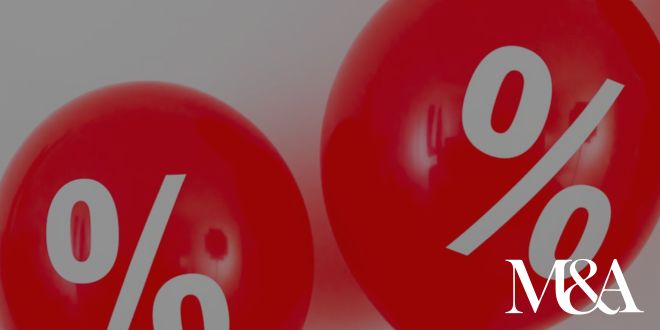This material has been prepared for general informational purposes only and is not intended to be relied upon as investment, accounting, tax, legal or other professional advice. The views of the third parties set out in this publication are not necessarily the views of Nead,LLC. Moreover, they should be seen in the context of the time they were made.
Life sciences companies have always operated in a world of uncertainty. Issues around cost and pricing, clinical and operational innovation, customer and consumer engagement, and regulatory compliance have existed for decades. In addition, new and evolving technology advancements– more sophisticated electronic medical records (EMRs), wearable health care devices, next-generation sequencing, breakthroughs in genomics and gene therapy, and use of real-world evidence (RWE) and data analytics–have primed the life sciences sector for disruption. Each year brings changes and challenges, and 2018 is likely to follow suit.
Life sciences sector growth is closely tied to global health care expenditures which, in 2018 and successive years, are expected to be fueled by increasing demand from an aging population and the prevalence of chronic and communicable diseases (Figure 1, next page). Other potential growth drivers include improved economic activity in key geographies, continuing industry consolidation and collaboration; and new business models enabled by scientific and technology advances.
Life sciences companies of all sizes and in all segments–pharmaceuticals, biotechnology, generics and biosimilar, medical technology, and wholesale and distribution–will continue to focus on achieving profitable and sustainable growth in 2018. But this growth won’t come easy in an industry heavily influenced by health reform, cost pressures, price, and valued-based care models, and disintermediation from downstream vertical integration, economic fluidity, and political instability. Looking across a landscape of challenges, the mismatch between increasing R&D expenses and the payer and public demand for lower-cost treatments is a game-changing issue because it will likely affect both the direction and speed of the sector’s future development.
How should life sciences companies invest and operate to thrive in today’s world of uncertainty? What capabilities do they need to leverage massive (and growing) quantities of electronic health information across the enterprise, from R&D through product commercialization? How can company leaders develop incremental and breakthrough strategies that de-risk clinical, business, and operating models and create added value for patients, payers, and shareholders?
Overview & Outlook
Although pharmaceutical companies continue to deal with the repercussions of patent expiries and payers’ cost control efforts, the growing acceptance of sometimes high-priced innovative orphan drugs and ongoing industry consolidation are expected to drive sales growth for the next several years. 2015 saw a drop in total global pharma sales, in nominal US-dollar terms, due to exchange-rate effect and the impact of cost control efforts in several markets; however, sales are expected to improve over the 2016-2020 period, growing at an average of 4.4 percent annually to total a projected $1.2 trillion in 2020 (Figure 1). Sales from the top 10 pharmaceutical companies accounted for ~35 percent of the 2015 global pharma market.
Current Trends
Pharmaceutical manufacturers posted consistent growth during the five-year period to 2017, thanks to a globally aging population and a growing middle class in emerging economies, boosting demand for both brand-name and biosimilar prescription products. As the baby-boomer population ages, more individuals over the age of 65 require pharmaceuticals to treat their chronic illnesses, spurring demand for industry products. In addition, longer life expectancies prompted many individuals to purchase medications to enhance quality of life and wellness around the globe. Additionally, the emergence of new viruses, pandemics and drug-resistant infections spurred significant research and development (R&D) activity, providing pharmaceutical manufacturers with revenue streams from more products in their drug pipeline.
Over the five years to 2017, industry revenue is anticipated to grow at an annualized rate of 2.1% to $1.2 trillion, including 2.7% revenue growth in 2017 that was realized. As more pharmaceutical manufacturers expand to serve emerging markets, industry revenue is expected to grow, especially as manufacturers target prevalent region-specific diseases. Profit is increased from 22.9% of industry revenue in 2012 to 24.1% in 2017, driven by rising global consumer demand for high-margin biologic drugs.
Patent Cliff
A wave of patent cliffs threatened the industry over the past five years. In 2012, the industry contended with the loss of patent protection, costing brand-name manufacturers an estimated $30.0 billion in annual sales. While the patent cliff constrained industry revenue growth for manufacturers, it has benefited consumers, especially patients in emerging economies who can afford generics over brand name drugs. Though generating less revenue than brand-name pharmaceuticals, the introduction of many new generics, also known as biosimilar, expanded pharmaceutical access. Adapting to the changing global consumer, many brand-name pharmaceutical manufacturers entered into agreements with generic manufacturers in an attempt to sell licensing rights for generic manufacturers to make authorized generics.
Changing Structure
An increasing number of major pharmaceutical companies have restructured their R&D activities to cut costs and improve productivity. For example, Pfizer and GlaxoSmithKline have developed intellectual property- and asset-sharing agreements to develop new drugs for diseases, such as HIV. Meanwhile, several pharmaceutical companies have partnered with academic institutions to promote research-based innovation, while major global players have formed alliances with generic drug manufacturers to expand their presence in emerging markets.
To keep research costs low, operators have slashed research facility numbers and employees and engaged in mergers and acquisitions. For example, some pharmaceutical companies acquired others simply to gain the acquired company's drugs already in development, rather than develop these drugs in-house via R&D efforts. As a result, over the five years to 2017, the number of worldwide industry enterprises is expected to decrease at an annualized rate of 1.0% to 4,680. At the same time, many large pharmaceutical companies are acquiring biotechnology companies that have a strong portfolio in a particular therapeutic class. During the same period, the number of employees is expected to decline at an annualized rate of 3.3% to 6.4 million workers due to increased automation.
Global Trade and Regulations
The industry contended with global governments seeking to reduce drug costs. This trend has been particularly popular in Europe, with austerity measures resulting in many countries announcing reimbursement reductions. In response, many pharmaceutical companies have altered their drug portfolios from primary-care blockbusters to specialties such as oncology, immunology and inflammation, where the medical need is so high that prices are more-readily accepted by regulators.
While this trend provided the industry with stable need-based demand, counterfeit drugs have hampered industry revenue growth. According to the World Health Organization, counterfeit drugs currently account for 10.0% of the global market, but in some emerging countries, this proportion is as high as 30.0% to 40.0%. Recent data from the World Customs Organization puts the drug counterfeiting business at $250.0 billion a year. Protection and enforcement of intellectual property rights remains a difficult issue in many emerging markets, with forgery and first-copy products widespread.
Global Industry Landscape
Nevertheless, global cost-cutting strategies to lower healthcare costs will constrain industry revenue growth. In 2015, the Chinese government removed its drug pricing caps; however, the introduction of price bidding will likely intensify price-based competition for industry operators that manufacture products for the Chinese market. Some markets, such as Germany, have moved toward value-based pricing, which prices drugs based on their efficacy. India and Brazil have national lists of essential drugs and their respective prices. While many manufacturers will focus on blockbuster-drug development within a small market niche, such as orphan drugs, many manufacturers will instead focus on developing drugs that demonstrate efficacy for value-based healthcare models. During the five-year period to 2022, industry trade is expected to rise at an annualized rate of 4.0% to $765.4 billion, due to the burgeoning elderly population stimulating global demand for pharmaceuticals, which will likely exceed production capabilities for many manufacturers in developed markets.
The current trend of consolidation is likely to continue, given the globalized nature of the industry's major players and their need to sustain waning drug pipelines due to the patent cliff. Additionally, a large number of small acquisitions are expected to occur across national boundaries as many pharmaceutical manufacturers acquire biotechnology firms. However, the recent implementation of tax inversion laws in the United States may prevent some US-based pharmaceutical companies' willingness to acquire foreign companies that are at least one-fourth of their size, potentially slowing down merger and acquisition activity.
During the five-year period to 2022, the number of industry enterprises is expected to grow at an annualized rate of 2.9% to 5,388, and employment is anticipated to rise at an equivalent rate to 7.4 million employees, driven by many manufacturers acquiring biotechnology companies and enhancing their research and development capabilities to meet global demand for biosimilar drugs.
Revenue Outlook
Risks and Barriers to Entry
The high costs of R&D pose a substantial obstacle for new companies. High levels of capital expenditure are required at the onset to establish a manufacturing plant geared to producing such high-cost, high-tech drugs. Continuous technological and research investments add to initial costs for drug development. The time factor involved is another obstacle; developing a product from conception and synthesis through to the regulatory approval process can take up to 15 years. As a result, less than one-third of the products that make it to the market successfully recoup R&D costs.
Government regulatory policies are also a significant barrier to entry; the pharmaceutical industry is among one of the most highly regulated industries. Varying regulatory frameworks, which vary by country, may pose as a barrier to potential industry entrants that want to have a global market reach. The cost of complying with various regulations, such as marketing, manufacturing inspections, licensing as well as clinical trial regulations poses as a barrier to potential industry entrants. Prices for pharmaceutical products are not set by market forces in many countries but, instead, by government policies that have been designed to curb escalating healthcare costs. Furthermore, the high costs of government-mandated testing trials and continuous manufacturing oversight can discourage a new pharmaceutical company from entering the market.
M&A Landscape
In 2017, deal volume in the healthcare sector overall was very active as far as mergers and acquisitions (M&A) were concerned. However, in the biotech and pharma space it was at the lowest levels in many years and a fraction of that of the boom years of 2014 and 2015. The actual number of pharma/biotech M&A transaction announcement tracked by The Pharma Letter for full-year 2017 was just 101, compared with 130 in 2016 and 166 in 2015, which was a record year.
Moreover, in value terms, nothing has ever come close to the 1999 acquisition of Warner Lambert by Pfizer (NYSE: PFE), worth a massive $111.8 billion, but which, adjusted for inflation, would have been a staggering $160 billion. Of the total deals tracked in 2017, just 15 had a potential value of over $1 billion to the sellers, compared with 23 in 2016 and 30 in 2015. The combined value of these 15 deals was $149.51 billion.
The $69 billion merger of CVS Health and Aetna was by far the biggest healthcare M&A deal announced in 2017, but given it is the combination of a US drugstore chain and a healthcare insurer, it was not strictly speaking a “pharmaceutical” deal as covered in The Pharma Letter’s annual review of activity in this sector.
At $30 billion, the Johnson & Johnson (NYSE: JNJ) acquisition of Swiss biotech Actelion, which was first mooted in 2016 but only formerly pursued in 2017, was by far the biggest pure biotech/pharma transaction of the year. Besides Gilead Sciences’ (Nasdaq: GILD) $11.9 billion purchase of Kite Pharma, and Thermo Fischer’s $7.2 billion takeover of Dutch group Patheon, 2017 was a rather quiet one on the M&A front in the pharmaceutical sector.
As well at the Kite deal, which took anti-viral biotech giant Gilead into the field of cell therapy, the company made a smaller acquisition, that of USA-based Cell Design Labs for $175 million upfront plus $322 million contingent, thus gaining new technology platforms that it hopes will further enhance its research and development efforts in cellular therapy.
Sources
- Industry and Market Research to help you make faster, better business decisions, MARKET RESEARCH REPORTS | PROCUREMENT RESEARCH REPORTS | IBISWORLD US, https://www.ibisworld.com/ (last visited Jan 17, 2018).
- Pharma News | Pharma Industry | Pharmaceuticals Industry | FiercePharma. (n.d.). Retrieved January 17, 2018, from https://www.fiercepharma.com/
- Acquisitions. Capital, INVESTMENT BANK, https://www.investmentbank.com/ (last visited Jan 17, 2018).
- McKinsey & Company, MCKINSEY & COMPANY, https://www.mckinsey.com/ (last visited Jan 17, 2018).
.svg)





.svg)
.png)


.svg)